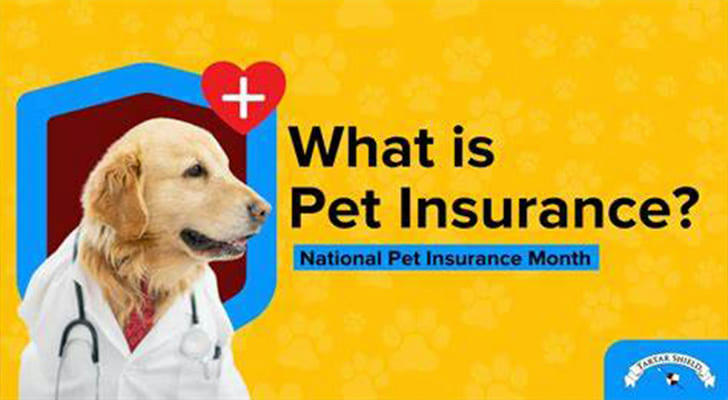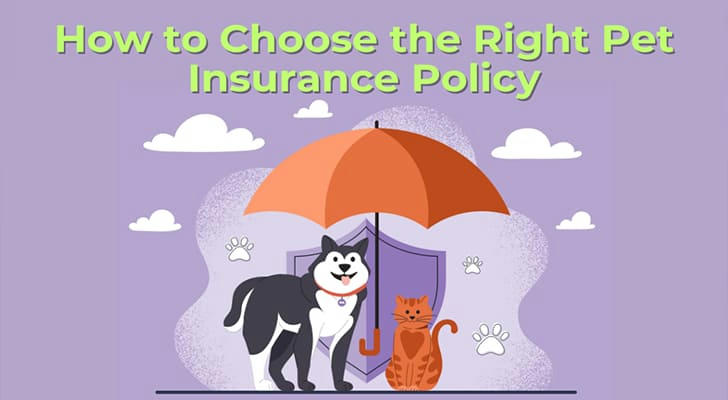Pet insurance: a protective umbrella for your pet

As people's living standards improve, pets have become an indispensable member of the family. However, when pets are sick or injured, the high medical expenses often catch pet owners off guard. At this time, pet insurance is particularly important.
What is pet insurance?

Pet insurance is an insurance product that provides medical protection for pets. When a pet is sick or injured, the insurance company will pay part or all of the pet's medical expenses according to the policy agreement.
Why do you need pet insurance?

Pet medical expenses are high: The cost of pet disease treatment, surgery, etc. is often very expensive, especially for some seriously ill or long-term pets. Pet insurance can help pet owners share this part of the financial burden.
Accidents may happen at any time: Pets may have various accidents in their daily lives, such as being hit by a car, accidentally eating foreign objects, etc. Pet insurance can provide protection for these accidents.
Medical needs of aging pets: As pets age, the risk of illness will also increase. Pet insurance can provide comprehensive medical protection for elderly pets.
What expenses can pet insurance pay for?
The scope of compensation for pet insurance varies depending on the insurance company and policy terms, and generally includes:
Disease treatment costs: including outpatient fees, hospitalization fees, surgery fees, drug fees, etc.
Accidental injury costs: including treatment costs for accidental injuries such as fractures, burns, and poisoning.
Preventive medical care: Some insurance products also include preventive medical expenses such as vaccinations and physical examinations.
Stories of European pet owners
Max in Germany: Max's golden retriever accidentally swallowed a piece of glass during a walk, causing severe intestinal damage and requiring emergency surgery. The high cost of surgery made Max's family very anxious. Fortunately, they had purchased pet insurance for their dog early, and the insurance company covered most of the medical expenses, helping Max's family through the difficulties.
Sophie in France: Sophie's cat suffers from chronic kidney disease and needs long-term dialysis treatment. The high cost of dialysis made Sophie very troubled. Fortunately, she bought pet insurance for her cat, and the insurance company provided comprehensive protection for the cat's dialysis treatment, allowing Sophie to continue to provide the best treatment for the cat.
David from the UK: David's dog fell down the stairs while playing and broke his leg. David rushed his dog to the pet hospital for surgery. Although the cost of the surgery was high, David felt relieved because the insurance company covered most of the medical expenses because he had purchased pet insurance for his dog.
How to choose the right pet insurance

When choosing pet insurance, in addition to considering factors such as the qualifications, premiums, and coverage of the insurance company, you should also pay attention to the following points:
Read the policy terms: Read the policy terms carefully to understand the specific content of the insurance product, including coverage, deductible, waiting period, etc.
Compare different products: Compare the products of different insurance companies and choose the one with the best cost-effectiveness.
Consult professionals: You can consult a veterinarian or insurance broker for professional advice.
Consider the actual situation of the pet: Choose a suitable insurance product based on factors such as the pet's breed, age, and health status.
Future development trend of pet insurance
As people pay more and more attention to pets, the pet insurance market is also showing a booming trend. In the future, pet insurance will develop in the following directions:
Product diversification: Pet insurance products will be more diversified. In addition to basic medical insurance, they will also cover risks such as accidental injury, loss, and death of pets.
Service personalization: Insurance companies will tailor insurance plans for pets based on factors such as the breed, age, and health status of different pets.
Intelligence: Through big data and artificial intelligence technology, insurance companies will be able to more accurately assess the health risks of pets and provide more accurate insurance services.
Summary
In short, pet insurance is a way to provide protection for pets and a way for pet owners to be responsible for themselves. By purchasing pet insurance, pet owners can better cope with the economic pressure brought by the illness or injury of their pets, so that pets can receive timely treatment.
Warm Tips: Before purchasing pet insurance, be sure to read the terms of the policy carefully and understand the specific content of the insurance product to avoid disputes.
I wish your pets health and happiness!
